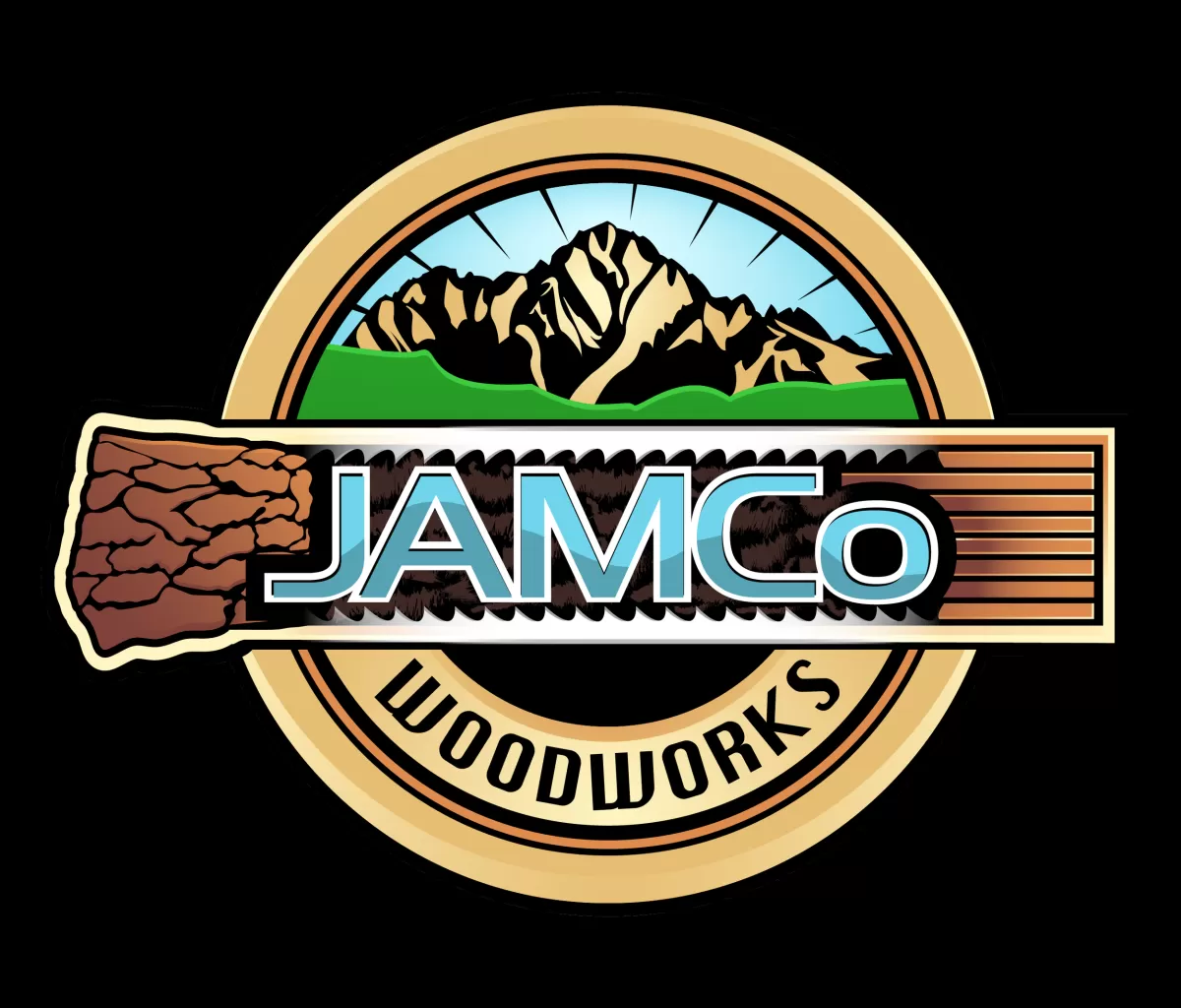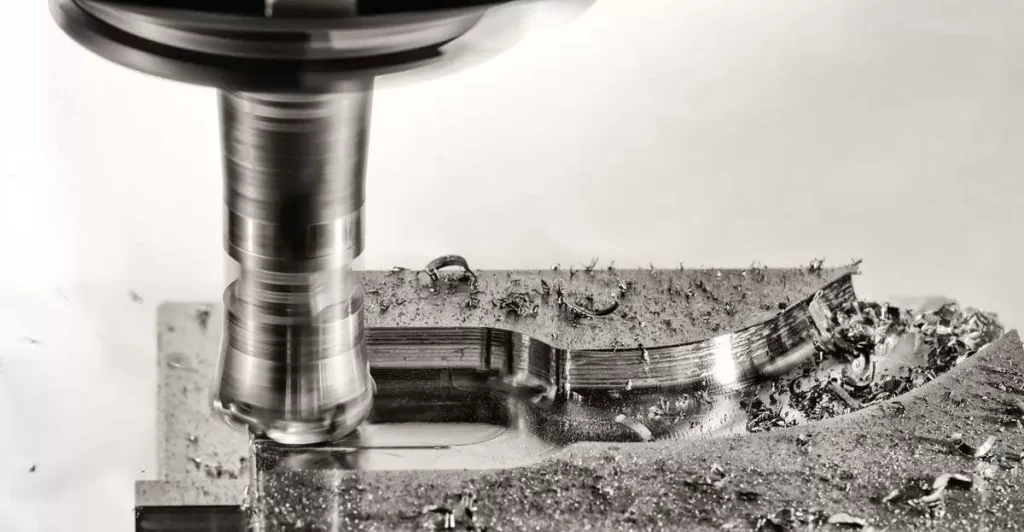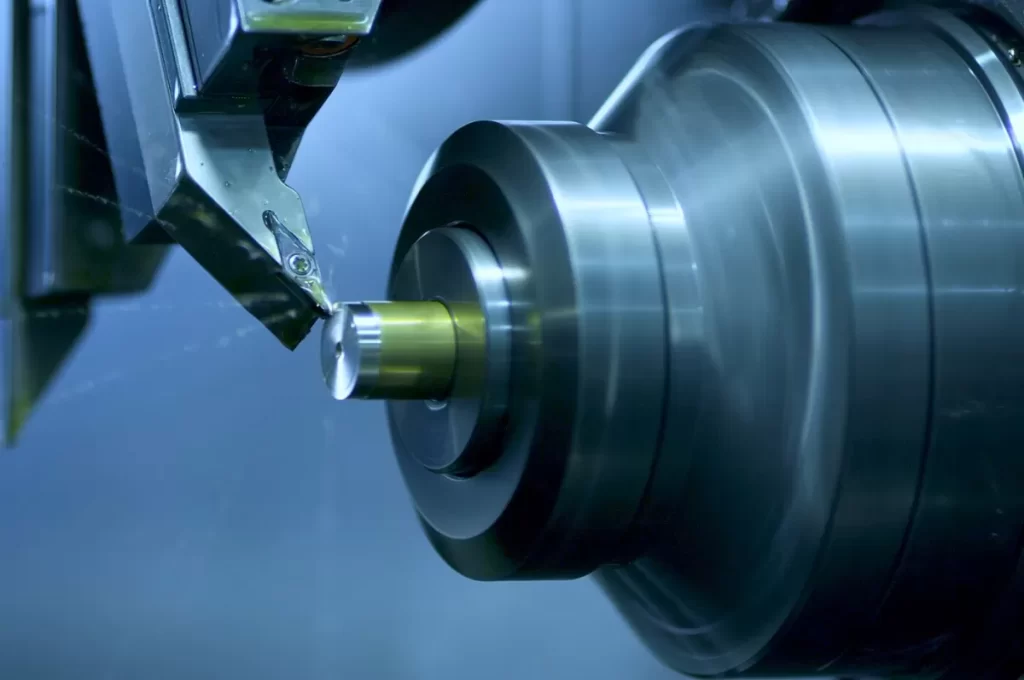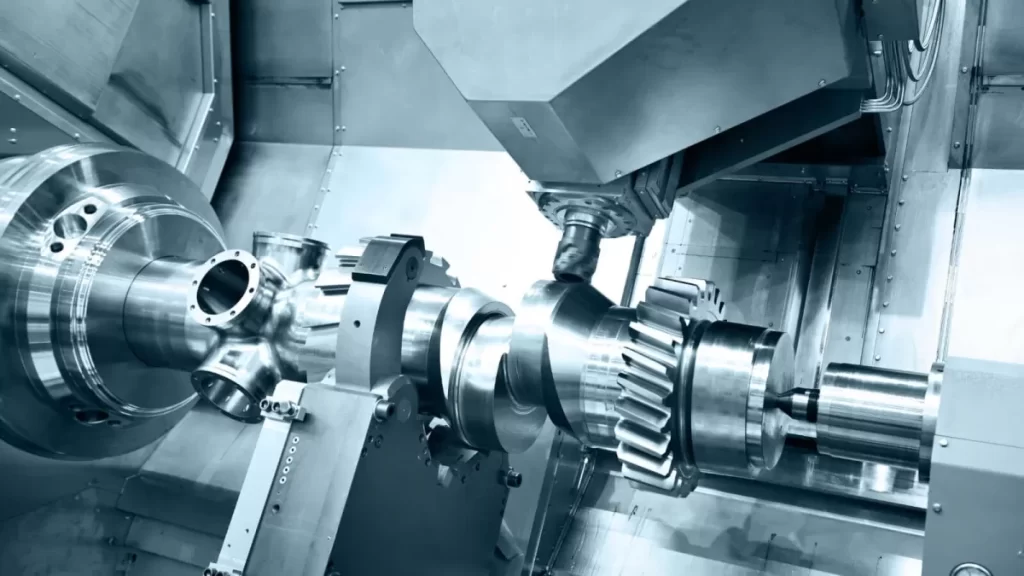What is Metal Milling
Metal milling is a subtractive manufacturing process used to shape and cut metal parts with high precision. This technique involves removing material from a metal workpiece using rotating cutting tools controlled by CNC (Computer Numerical Control) machines. The goal is to create components with complex shapes, fine details, and tight tolerances.
Definition and Process
In metal milling, a CNC milling machine removes excess metal by feeding the workpiece against a rotating cutting tool. The process can be performed in multiple axes—commonly 3 to 5 axis CNC milling—which allows for intricate designs and angled cuts. The process begins by designing the part digitally with CAD software, then programming the toolpath with CAM software. Once set, the CNC machine executes the milling, producing precise parts ready for further finishing or assembly.
Tools and Machines
Metal milling relies on specialized tools such as end mills, face mills, and drills, typically made from carbide or high-speed steel. CNC milling machines come in various sizes and configurations including vertical and horizontal mills. These machines provide rigidity and accuracy essential for metalworking, along with capabilities like coolant systems to manage heat and extend tool life. For more on metal tools used in milling, check out this guide on CNC metal cutting tools.
Materials
Metal milling works on a wide range of metals including:
- Aluminum
- Steel (stainless, carbon, alloy)
- Brass
- Copper
- Titanium
- Nickel alloys
Each material has distinct properties requiring specific tooling and machining parameters to achieve optimal results. Harder metals like titanium demand slower cutting speeds and tougher tools.
Applications
Metal milling is widely used across industries such as aerospace, automotive, medical devices, and metal fabrication. It produces components like engine parts, brackets, molds, dies, and precision mechanical assemblies. The versatility of CNC metal machining allows for rapid prototyping as well as large-scale manufacturing.
Advantages
- High precision and repeatability
- Ability to machine complex shapes and fine details
- Compatibility with a wide variety of metals
- Good surface finish and tight tolerances
- Efficient for both prototypes and production runs
Challenges
- Tool wear, especially when machining hard metals
- Heat generation requiring effective cooling
- Higher equipment and tooling costs
- Requires skilled programming and setup
- Potential for metal-specific issues like burr formation
Understanding the metal milling process and its requirements can help you select the right tools and machining parameters for your metalworking CNC projects, ensuring quality and cost efficiency throughout production.
What is Wood Milling

Wood milling is the process of shaping and cutting wood using precise tools and machines. It’s a type of subtractive manufacturing, where material is removed from a wood piece to create the desired shape or design.
Definition and Process
Wood milling involves using CNC routers or specialized milling machines to carve, drill, or cut wood materials. The process starts with a digital design, which is loaded into the milling machine’s software. The machine then follows the design to cut the wood accurately. This method is commonly used for creating furniture parts, decorative panels, and custom woodworking projects.
Tools and Machines
The main tool for wood milling is the CNC router. These machines are built to handle softer materials like hardwood and softwood, and they often have bits suited for cutting wood—like straight bits, ball-nose cutters, and V-bits. Handheld routers and spindle mowers may also be used but CNC routers provide higher precision and repeatability.
Materials
Wood milling typically works with different kinds of wood including hardwoods like oak, maple, and cherry, as well as softwoods like pine and cedar. Wood composites and plywood are also common materials for milling in various woodworking projects.
Applications
Wood milling is widely used in furniture making, cabinetry, signage, and custom wooden parts. It’s also popular for prototyping designs before mass production, as well as producing intricate carvings and detailed patterns that are tough to achieve by hand.
Advantages
- Allows complex designs with fine details
- High repeatability and precision with CNC routers
- Efficient for both small and large production runs
- Cost-effective compared to hand carving for detailed work
Challenges
- Wood’s natural grain can cause variations or tear-out
- Dust and chips need proper management for safety and machine care
- Tool wear can be quick if milling hard or abrasive woods
- Requires skill in setup and software programming for best results
Wood milling fits perfectly for projects that require precision and beauty in wood material, especially when using CNC milling technology to boost speed and accuracy.
Key Differences Between Metal Milling and Wood Milling
When you’re deciding between metal milling vs wood milling, it helps to know how these two processes differ in key areas. Here’s a quick breakdown to make things clear.
Comparison Table
| Aspect | Metal Milling | Wood Milling |
|---|---|---|
| Material Properties | Hard, dense, high strength | Softer, fibrous, varying density |
| Tooling | Harder, wear-resistant tools | Carbide or high-speed steel bits |
| Precision | Very high, tight tolerances | Moderate to high, depends on wood type |
| Speed | Slower to prevent tool damage | Faster due to softer material |
| Cost | Higher tooling and machine costs | Lower tooling cost, less machine strain |
Material Properties
Metal is tough and dense, which means it wears down tools faster and requires slower cutting speeds. Wood varies a lot—hardwoods like oak are tough, but still softer than metal. Wood can chip or splinter if not milled properly, while metal needs precise control to avoid damage.
Tooling Requirements
Metal milling uses hardened steel or carbide cutting tools built to handle heat and wear. The machines are usually heavier duty with stronger spindles. Wood milling uses carbide or high-speed steel tools designed to cut fibers cleanly without burning or tearing the material. Woodworking CNC routers are typically lighter and faster.
Precision and Speed
Metal milling demands higher precision for parts that need tight fits and repeatability. Cutting speeds are slower to protect tools and maintain accuracy. Wood milling can be faster and still look great, but it doesn’t need as tight tolerances in most cases.
Cost Considerations
Metal milling generally costs more because of tougher tools, heavy-duty machines, and slower speeds. Tool replacement frequency adds up too. Wood milling is more affordable, making it perfect for design projects or less demanding parts.
Understanding these core differences helps you pick the right milling process for your project and budget.
Choosing the Right Process for Your Project
Factors to Consider
Picking between metal milling and wood milling comes down to a few important factors:
- Material type: Are you working with metal or wood? This is the biggest factor since each process specializes in different materials.
- Project purpose: Does your project need the strength and durability of metal or the natural look and feel of wood?
- Precision and detail: Metal milling generally offers higher precision. Wood milling can handle detail too but might not match metal for tight tolerances.
- Budget: Metal milling tends to be more expensive due to tooling and machinery costs.
- Production volume: For large runs, metal milling can be cost-effective; for smaller or custom jobs, wood milling might be simpler.
- Tool availability: CNC milling tools vary for metals and woods — using the right tools matters for quality and speed.
Case Study
Imagine you’re designing custom brackets for a lighting fixture. These brackets need to be strong, corrosion-resistant, and precisely made to fit. Metal milling would be the go-to choice because it handles metal fabrication with accuracy and durability, perfect for this case.
On the flip side, if you’re building decorative wooden furniture pieces like cabinet doors or intricate trim, wood milling using CNC routers fits better. It lets you work with hardwood milling to bring out the natural grain and shape the parts precisely without risking cracks or burns.
When to Choose Metal Milling
- You need parts with high strength and durability.
- Precision machining to tight tolerances is a must.
- The project involves metals like aluminum, steel, or brass.
- Parts will be exposed to harsh environments or heavy use.
- You want a sleek, industrial finish.
- Batch production is moderate to high.
When to Choose Wood Milling
- Your focus is on aesthetic appeal, natural textures, or organic shapes.
- You’re working with hardwoods, softwoods, or composite woods.
- Precision isn’t as critical but craftsmanship is key.
- The project is custom, small-scale, or prototype-based.
- Cost constraints favor simpler tooling.
- You want to experiment with artistic woodworking CNC techniques.
Choosing the right milling process is about matching material properties and project goals. Whether it’s metal machining or woodworking CNC, focusing on needs helps ensure the best results.
For more on metal fabrication and tooling, check out our guide on CNC metal cutting tools. If woodworking is more your thing, explore our material options for hardwood milling.
Best Practices for Metal and Wood Milling

Metal Milling Tips
- Choose the right tools: Use carbide or high-speed steel cutters designed for metal to keep sharpness and precision.
- Control speed and feed rates: Metals require slower speeds and steady feed to avoid tool damage and achieve clean cuts.
- Coolant use: Always use coolant or lubrication to keep the metal and tools cool, preventing overheating and extending tool life.
- Secure the workpiece: Properly clamp metal parts to avoid vibrations that can ruin precision.
- Regular tool maintenance: Inspect and replace tools frequently to maintain quality and reduce downtime.
Wood Milling Tips
- Select appropriate bits: Use sharp, high-quality router bits made for wood, like carbide-tipped tools.
- Adjust speed settings: Wood typically mills faster than metal; higher spindle speeds and feed rates help avoid burns and clean cuts.
- Dust management: Use dust collection to keep the workspace clean and protect the machine and operator.
- Clamp carefully: Wood can be more forgiving but still needs secure clamping to prevent shifting during milling.
- Check grain direction: Plan your cuts according to the wood grain for smoother finishes and less tear-out.
HYCNC’s Expertise
At HYCNC, we understand the unique demands of both metal machining and woodworking CNC processes. Our experience ensures:
- Precise setup tailored to material properties and project needs.
- Expert advice on tooling and machine settings for optimal results.
- Efficient workflow that reduces costly mistakes and maximizes throughput.
- Reliable customer support for projects of any scale across the U.S. market.
Whether you’re working with metal fabrication or hardwood milling, HYCNC offers professional CNC service solutions that deliver quality and consistency every time.
FAQs
What is the main difference between metal milling and wood milling?
Metal milling involves cutting and shaping hard metals with precision tools, while wood milling focuses on shaping softer, organic materials like hardwood using different cutters. The tools, speed, and techniques vary to suit each material’s properties.
Can I use the same CNC machine for metal and wood milling?
While some CNC machines can handle both, it’s usually better to have specialized setups. Metal milling requires tougher, more rigid machines with specific tooling, whereas wood milling often uses CNC routers designed for softer materials.
Which process is faster, metal milling or wood milling?
Wood milling is generally faster because wood is easier to cut. Metal milling tends to be slower due to the hardness of metal and the need for precision to avoid tool wear and damage.
Is metal milling more expensive than wood milling?
Yes, metal milling typically costs more because of the need for specialized CNC tools, machines, and slower production speeds. Plus, metal materials themselves are usually pricier than wood.
What materials can I mill besides metal and wood?
With CNC milling, you can work on plastic, composites, foam, and even some ceramics, depending on the tooling and machine capabilities.
How do I decide between metal milling and wood milling for my project?
Consider your material requirements, desired finish, cost, and precision. Use metal milling for durable parts like automotive components, and wood milling for furniture, decorations, or prototypes where organic textures matter.
Does HYCNC offer support for both metal and wood milling projects?
Yes, HYCNC has extensive experience in both metal fabrication and woodworking CNC services, helping you choose the right process to fit your needs with precision and efficiency.




